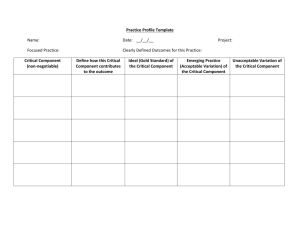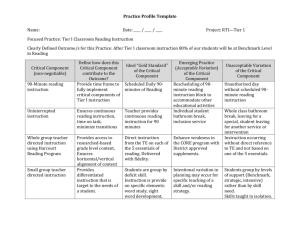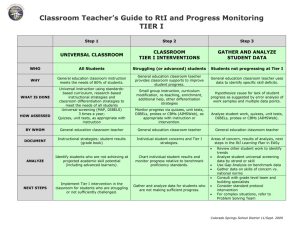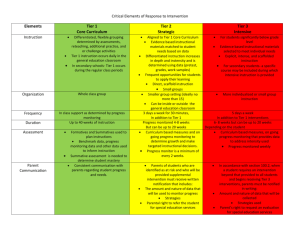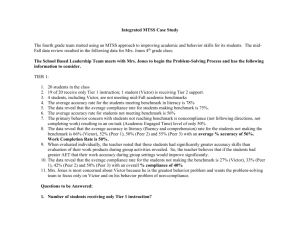Problem Solving
advertisement
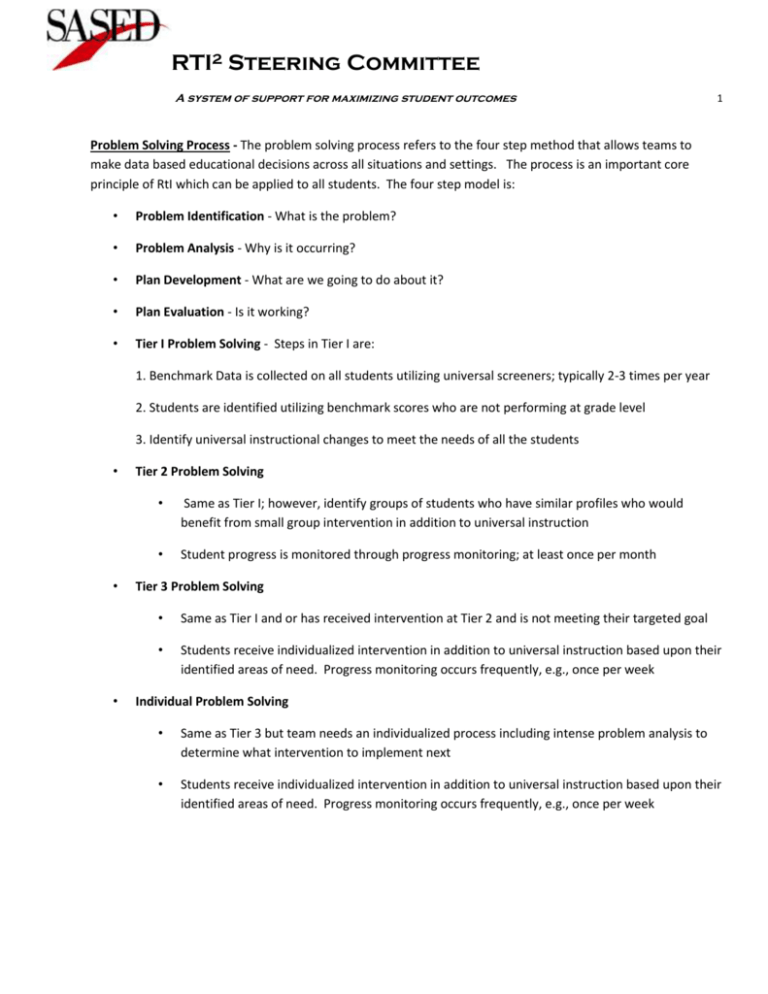
RTI2 Steering Committee A system of support for maximizing student outcomes 1 Problem Solving Process - The problem solving process refers to the four step method that allows teams to make data based educational decisions across all situations and settings. The process is an important core principle of RtI which can be applied to all students. The four step model is: • Problem Identification - What is the problem? • Problem Analysis - Why is it occurring? • Plan Development - What are we going to do about it? • Plan Evaluation - Is it working? • Tier I Problem Solving - Steps in Tier I are: 1. Benchmark Data is collected on all students utilizing universal screeners; typically 2-3 times per year 2. Students are identified utilizing benchmark scores who are not performing at grade level 3. Identify universal instructional changes to meet the needs of all the students • • • Tier 2 Problem Solving • Same as Tier I; however, identify groups of students who have similar profiles who would benefit from small group intervention in addition to universal instruction • Student progress is monitored through progress monitoring; at least once per month Tier 3 Problem Solving • Same as Tier I and or has received intervention at Tier 2 and is not meeting their targeted goal • Students receive individualized intervention in addition to universal instruction based upon their identified areas of need. Progress monitoring occurs frequently, e.g., once per week Individual Problem Solving • Same as Tier 3 but team needs an individualized process including intense problem analysis to determine what intervention to implement next • Students receive individualized intervention in addition to universal instruction based upon their identified areas of need. Progress monitoring occurs frequently, e.g., once per week

